Reviving Art: The process of conserving a manuscript
In this week’s blog, Fatima Al Dhaif, a student studying for an MA in Conservation at Camberwell College of Arts, London, shares her experience of working on the conservation and analysis of one of the manuscripts from the University of St Andrews Library’s Special Collections.
The project for my MA conservation degree at Camberwell College of Arts has been a dream, as the manuscript I treated for my final project, which is from the University of St Andrews Library’s Special Collections, gave me the opportunity to experience my love of manuscripts combined with the faith that the manuscript represents. The manuscript doesn’t only describe Islam but also the meanings of the illustrated Islamic patterns and the secrets of hidden energy.
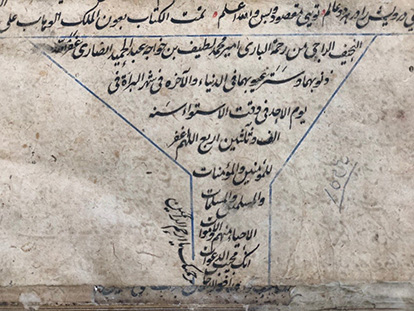
The manuscript is part of the ‘Ascension of the Prophet’, created in Persia and dated during the King Naser al-Din Shah Qajar dynasty in the 19th century (ms65(o)). The artist or author was Al Najeef Al Raji Min Ramat Al Badi Ameer Mohammed Lateef bin Khawajah. The manuscript is written in black iron gall ink and red ink on hand-made rag paper with a ruled border frame of gold, blue and copper-green lines on each page. It comprises 288 pages arranged in three chapters. The first page of each chapter carries illuminations at the head.
The manuscript was oversewn and bound in a Western-style plain half-cloth case binding which was tight and restricted its opening. There were signs of extensive repairs to the border decorations throughout to the text block which caused the pages to stick together in places. Additionally the manuscript was water and mould damaged.
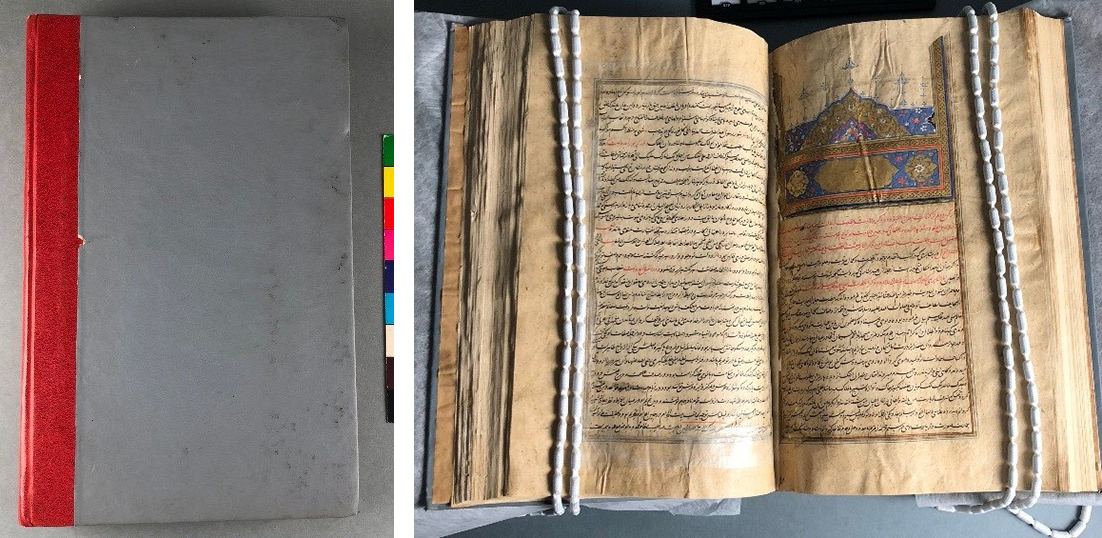
Historical research and technical analysis
To inform the treatment proposal and methodology, it was important to understand the techniques and materials used in creating the manuscript, so I met with Persian specialist curators and conservators to discuss the techniques and the adaptations used at the time of the Qajar dynasty. It was interesting to learn that the manuscript developed during the era of establishment of Dar Al Funun, the first modern university in Iran, and that the book is characterized by unique features that are unprecedented in Islamic bookmaking, abstractly anti-Persian, and relatively modernised.
After extensive research, all the manuscript pages were examined and documented. This page-by-page survey recorded the level of damage to each page and the risk of further damage. The pigments used in the manuscript were identified through Raman spectroscopy, a non-destructive technique which can be used to identify the materials used to make an object or for decorating its surface. Raman spectroscopy works by shining a laser beam onto the surface of an object or its media (e.g. in the illuminations or on the decorative borders), the scattered light interacting with the molecules in the object. The scattered part of light, called the Raman effect, is collected to produce a spectrum. Each pigment has a unique spectrum which acts like a fingerprint that can be used to identify it. Raman spectroscopy positively identified pure lapis, red lead, and white lead pigments on the manuscript.
Extensive historical repairs had been made to the manuscript using paper, pressure sensitive tape and a clear plastic. To positively identify the clear plastic repair material, FTIR analysis (Fourier Transform Infrared Spectroscopy) was used. FTIR analysis works by shining an infrared light onto a material sample to observe its chemical properties. Some of the infrared light will be absorbed by the sample, and some of the infrared light will be transmitted through the sample. The resulting spectrum represents the molecular “fingerprint” of the sample which can be used to identify the material the sample is made of.
FTIR analysis helped to positively identify the plastic used in the repairs as cellophane.
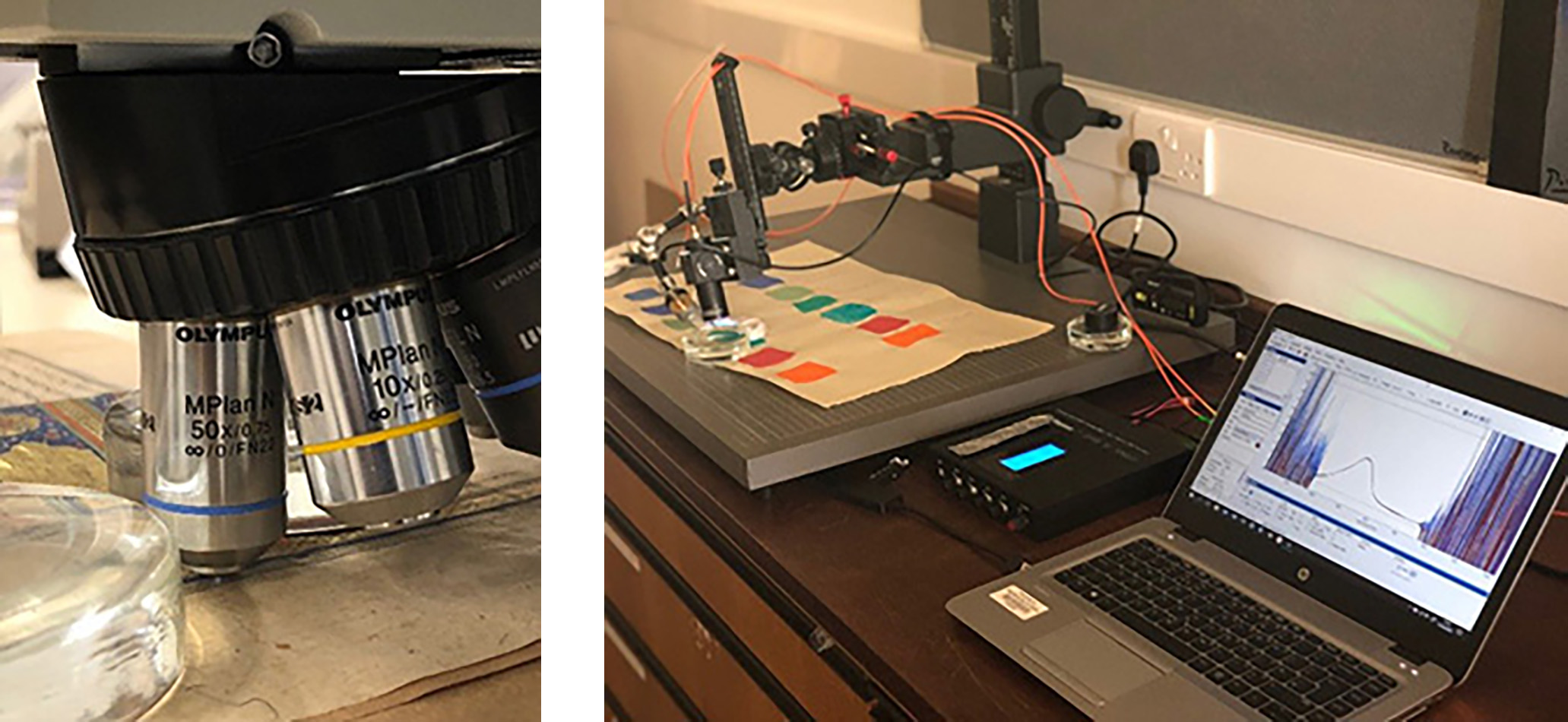
The Raman microscopy investigation of the manuscript illumination led me to consider the light sensitivity of the media and how a balance can be struck between providing the manuscript for public exhibition and maintaining and preserving the quality of the artworks.
To quantify the light sensitivity of the media, and therefore determine the appropriate exhibition lighting conditions, mock-up paint samples of the pigments used in the original manuscript were tested using a micro-fading spectrometer. As micro-fading is a destructive test, only mock-up samples were tested. For this analytical technique an intense beam of light is focused at a sub-millimeter scale (onto a pigment or material) while the colour change over time is simultaneously monitored. This gives the fading rate of an object which can be used to determine how long an item can be exhibited for and under what light intensity.
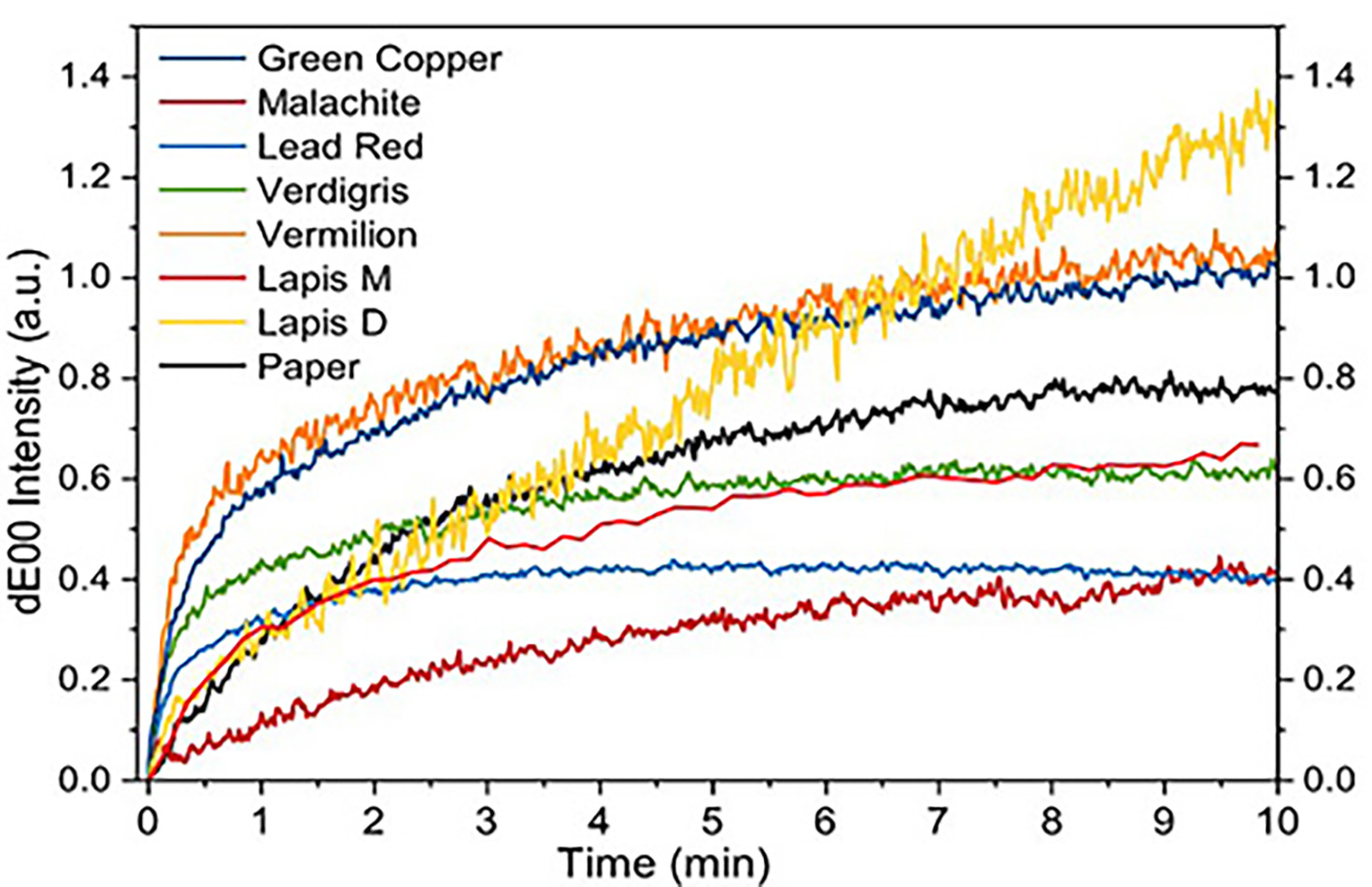
Condition and treatment
The manuscript had been subject to various chemical degradation processes. These relate to the green pigment used in the ruled borders, water damage, biological damage and pest attack. Subsequently pressure sensitive tape and cellophane self-adhesive film had been used to keep damaged parts together. The combination of these forms of damage with the tight over-sewing meant that the manuscript could not be handled safely.
Disbinding the volume was required in order to clean mould, remove old degrading repair material and fully stabilize each page. The treatment methodology had to be carefully considered as the cultural and religious significance of the manuscript presented an ethical dilemma. Solvents are not freely used on religious Islamic material but were needed to remove the historic and now damaging repairs.
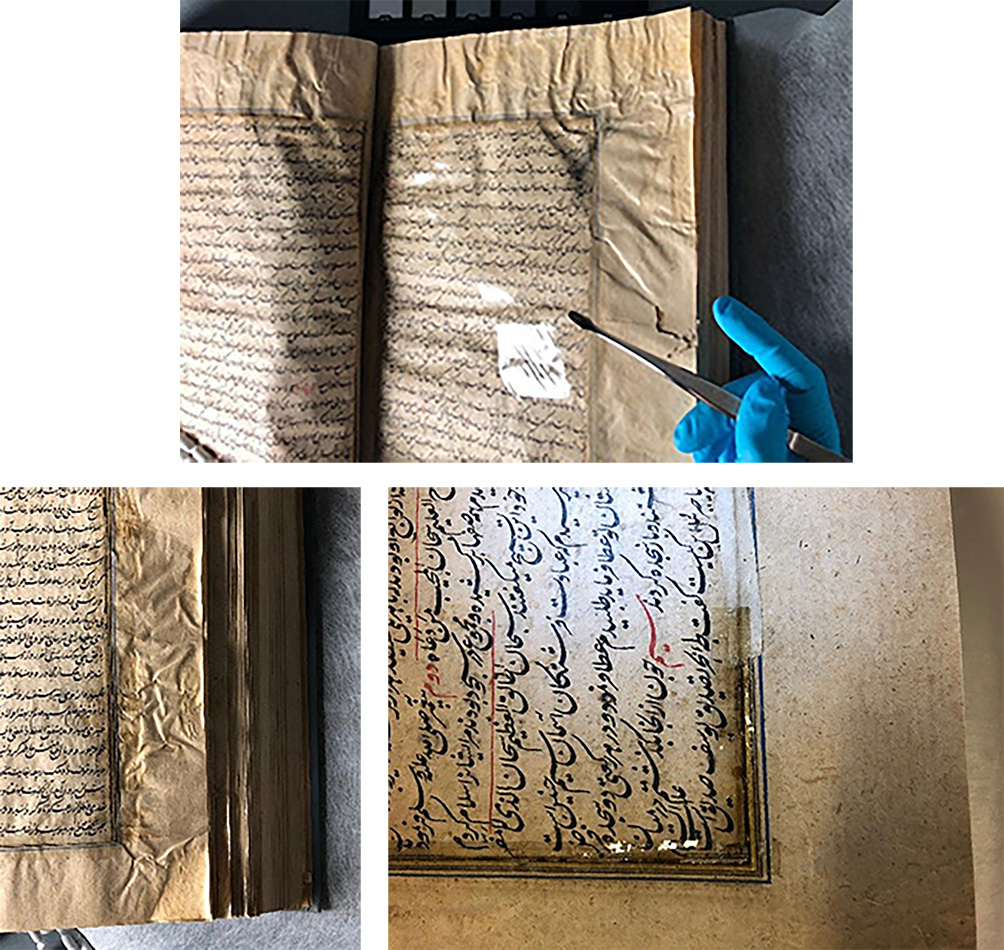
After disbinding the manuscript from its case binding, cleaning and removal of pressure sensitive tape from the borders of the pages, the process of removing the cellophane film repairs could begin. The process started with the mechanical removal of the cellophane, leaving a layer of adhesive behind on the paper.
Different methods to remove the adhesive were tested as some of the pages required large areas to be treated. The use of a solvent was chosen as the best method, as it was effective at softening the remaining adhesive and being volatile would evaporate quickly and not remain on the manuscript permanently after treatment. Advice and approval was sought from Kristine Rose, Senior Conservator at the Chester Beatty Library in Dublin and specialist in the conservation of Islamic material, and from the custodian Gabriel Sewell, Assistant Director of the Library (Special Collections) at St Andrews. The chosen solvent was the Diethyl carbonate applied as a vapor which was safe to use and produced good results.
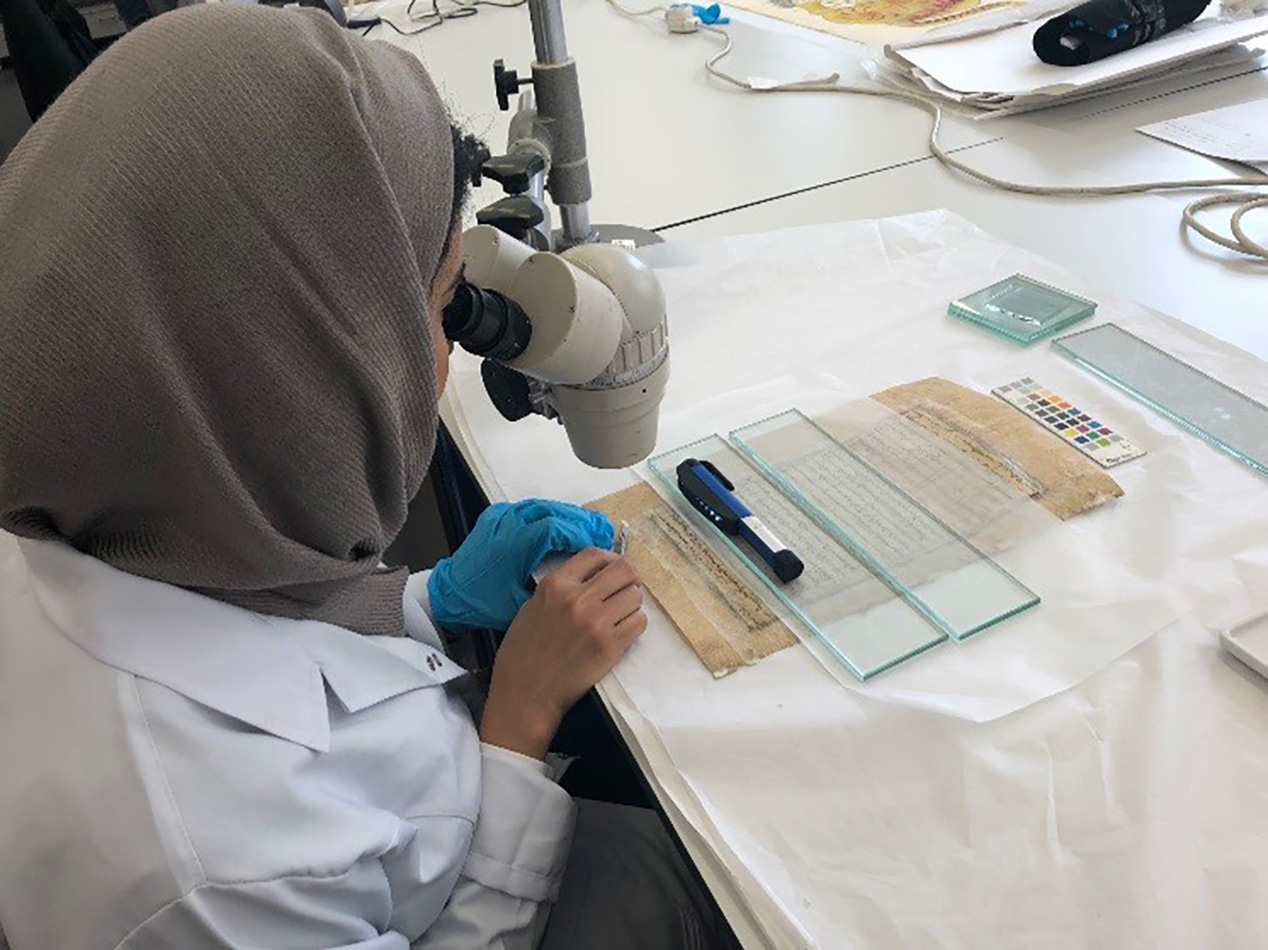
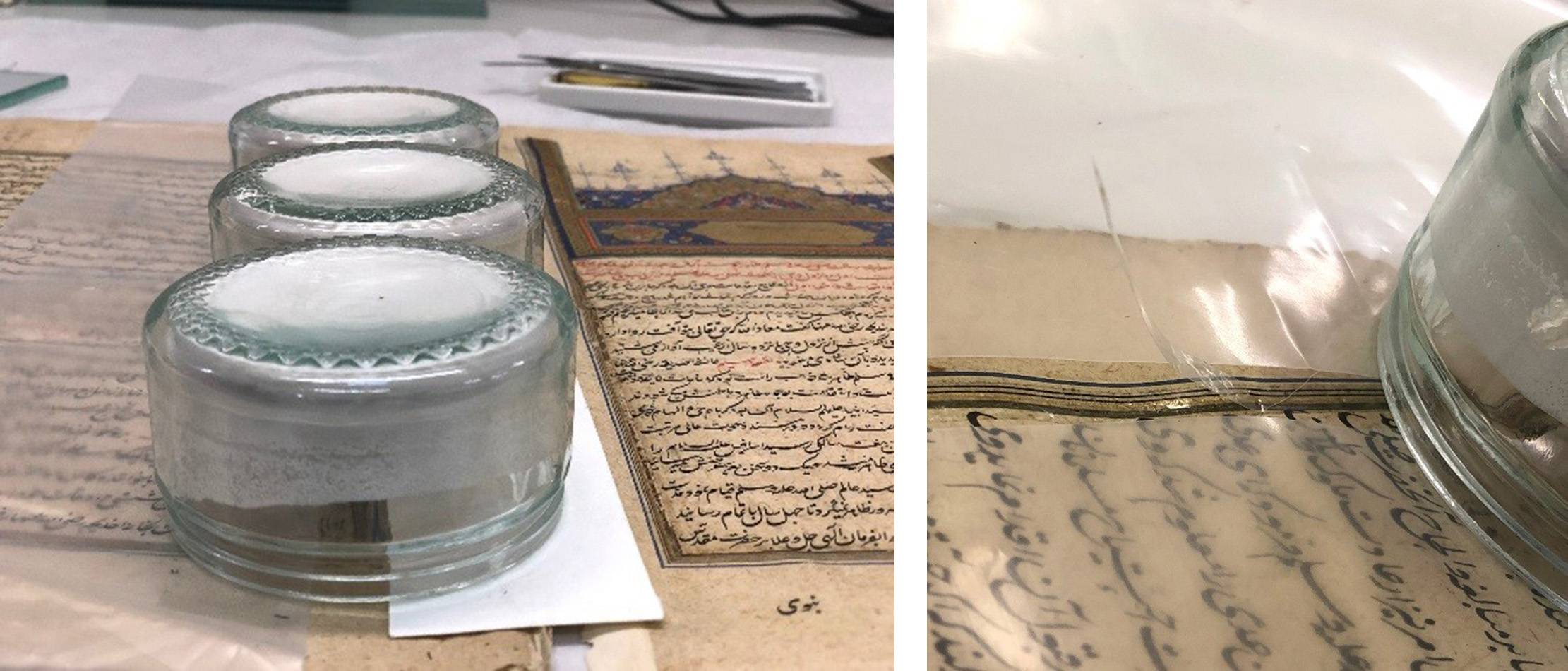
Notably, areas of the page borders that did not have any pressure sensitive tape also exhibited embrittlement and general corrosion-related damage. This meant that the solvent was not used comprehensively but in a strategically controlled manner. Remoistenable tissue was used to stabilize the page border regions which had been damaged by the corrosive green media, concentrating mostly on areas that were split. Wheat starch paste and methylcellulose, were selected mainly for their high viscosity, which would work well with the remoistenable tissue. The pre-coated tissue was found to be stable, strong and most importantly reversible.
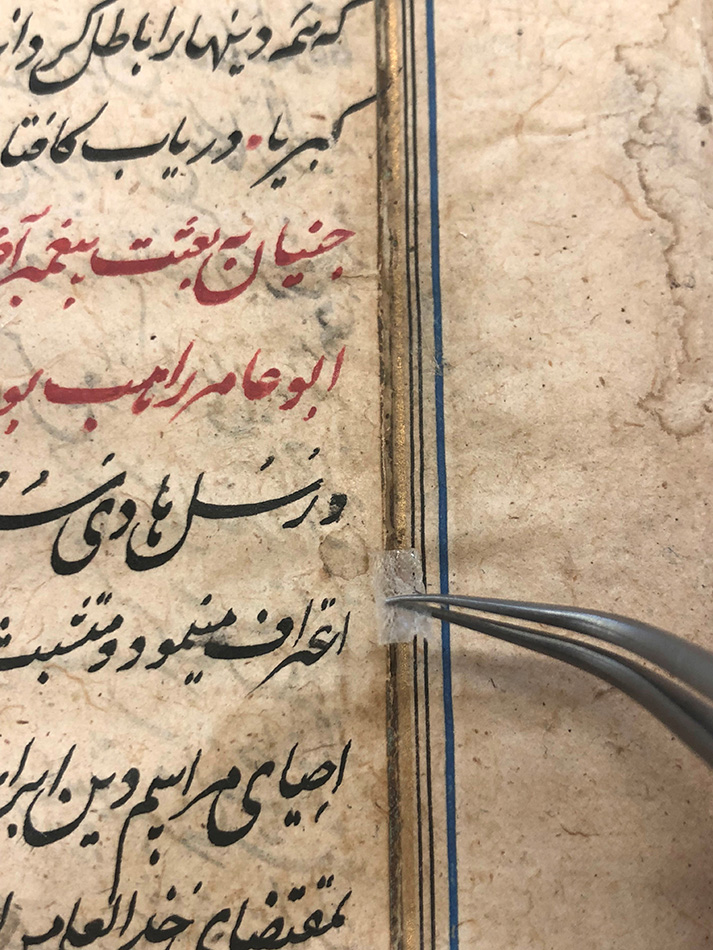
Due to the size of the volume and the time constraint of the project not all pages could undergo major conservation treatment. However, 80% of the manuscript was successfully stabilized and ready to be digitized. The manuscript is still very fragile so handling should be done by trained staff.
As part of my project, to demonstrate how the fully conserved manuscript could be rebound in a more sympathetic binding style, I produced a mock up binding of a 19th century Persian manuscript. Here are the stages involved in producing the mock-up binding.
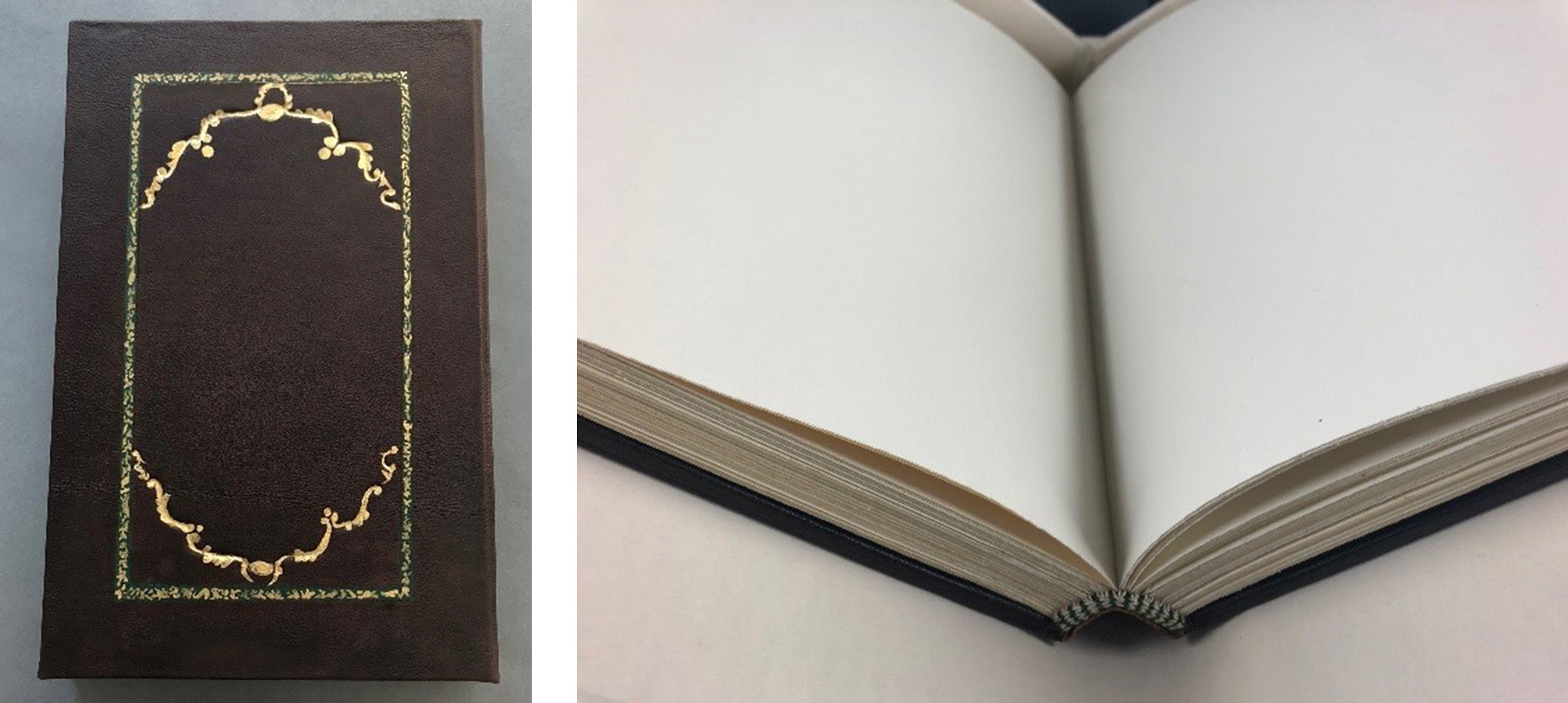
Fatima Al Dhaif
You say that solvents aren't freely used on religious Islamic manuscripts. Do you mind my asking why?
Thank you for the question. Out of respect for the religious manuscript and text we would avoid using solvents as some solvents may contain alcohol. However, when intervention is necessary it can be justified, similar to when its use is acceptable in medical circumstances. The alcohol in this case was volatile and will not remain on the object permanently. Therefore, it was a valid option in the treatment of this manuscript.
Thank you - perfectly obvious if I'd thought about it!